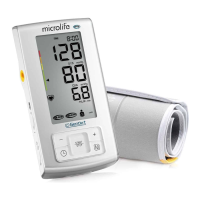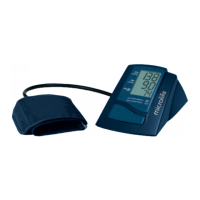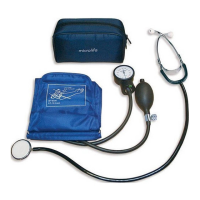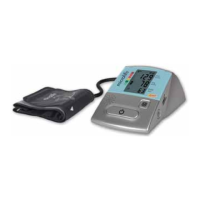2
Table of Contents
1. Important Facts about Blood Pressure and Self-Measurement
• How do I evaluate my blood pressure?
2. Using the Instrument for the First Time
• Activating the fitted batteries
• Setting the date and time
3. Taking a Blood Pressure Measurement using this Instrument
4. Appearance of the Heart Arrhythmia Indicator for early
Detection
5. Data Memory
• Viewing the stored values
• Memory full
• Clearing all values
• How not to store a reading
6. Setting the Alarm Function
7. Battery Indicator and Battery change
• Low battery
• Flat battery – replacement
• Using rechargeable batteries
8. Error Messages
9. Safety, Care, Accuracy Test and Disposal
• Safety and protection
• Instrument care
• Cleaning the cuff
• Accuracy test
•Disposal
10. Guarantee
11. Technical Specifications
Guarantee Card
Type BF applied part
1. Important Facts about Blood Pressure and Self-
Measurement
Blood pressure
is the pressure of the blood flowing in the arteries
generated by the pumping of the heart. Two values, the
systolic
(upper) value and the
diastolic
(lower) value, are always measured.
The instrument also indicates the pulse rate (the number of times
the heart beats in a minute).
Permanently high blood pressure values can damage your
health and must be treated by your doctor!
Always discuss your values with your doctor and tell him/her if you
have noticed anything unusual or feel unsure. Never rely on
single blood pressure readings.
A number of factors can affect the accuracy of measurements
taken on the wrist.
In some cases, the result may differ from the

